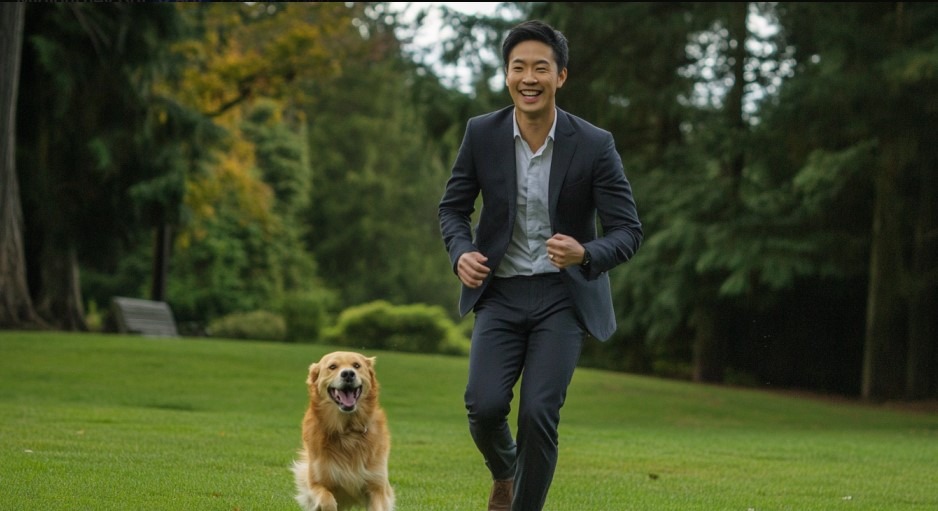Dog walking is very physically demanding and requires not just strength and endurance but proper technique. Dog walking is also a major source of physical activity, while the park is a very important place where people walk dogs. A big proportion of the population has dogs, and dog ownership has been proven through good evidence to increase one’s levels of physical activity. However, not all owners walk their dogs regularly. See here more on: alexander-ostrovskiy-dogs.co.uk

1. Why Physical Fitness Matters for Dog Walking
This is a physical job because, by nature, it entails stamina, strength, and agility. A dog walker is expected to walk a multitude of dogs with different temperaments on varied terrains hence demanding physical endurance. Good physical fitness not only means safety for both the dog walker and the dogs but also ensures that they put in good performances while experiencing less fatigue.
2. Basic Physical Demands of the Job
Dog walking is a continuous physical activity, and it usually is conducted hour-long. The cardinal physical demands include good cardiovascular endurance, a strong core, upper body strength mainly for leash control, and balance. A walker must also be flexible enough to absorb sudden movements or unexpected dog behaviors.
3. Core Strength: The Foundation of Safe Dog Walking
A strong core is essential for stability and balance, let alone when one works with big-sized or reactive dogs. Such exercises that will help in building the core strength include planks, bridges, and rotational movements. This will prevent the risk of falls amongst other forms of accidents.
4. Building Upper Body Strength for Leash Control
Larger variable-sized dogs requiring big and strong owners/handlers exert considerable upper body strength when being handled: this, therefore, necessitates push-ups, and resistance bands that help pull, and improve grip strength as this improves the ability to maintain multiple leads and hence, reduces stress in shoulders.
5. Cardiovascular Fitness for Long Sessions of Walking
Essentially, dog walkers usually have to walk a few miles daily and hence are inclined to maintain a good cardiovascular shape. Therefore, joggers, bicyclers, or brisk walkers provide heart health, stamina, and endurance that will enable them to stay abreast of energetic dogs.
6. Injury Prevention Techniques
Long-term success as a dog walker would be injury prevention. This would be achieved through proper warm-ups before walks, appropriate footwear, and an understanding of how to handle dog behavior to reduce stress on joints and muscles. It simply equates to listening to one’s body and taking good care of small aches and pains before they get the better of them.
7. Proper Walking Posture and Biomechanics
Good posture while walking will also avoid any unnecessary strains on the back, shoulders, and knees. Walkers will stand up straight, keep the shoulders relaxed, and engage in the core while holding the leashes in a firm but not over-tight grip.
8. Resistance Exercises for Dog Walkers
The exercises to consider incorporating into the workouts of dog walkers are lunges, squats, deadlifts, and shoulder presses; this will make them work out those muscles most utilized in the walk and enhance resilience against combating fatigue.
9. Weather-Specific Fitness Considerations
Weather conditions may certainly influence physical performance: in hot weather, one is concerned with hydration and sun protection; in winter, it is necessary to layer up and put on insulated waterproof gear. Adaptation of physical activity in concern with weather conditions reduces health risks.
10. Recovery and Rest: Avoiding Burnout
Rest is as important as exercise. A dog walker should have rest days, active recoveries via light stretches, and adequate sleep. To be sure, failure to recover will result in chronic fatigue and a possible long-term injury.
11. Stretching Routines for Before and After Walks
It promotes flexibility, reduces muscle tension, and prevents injury. The calves, hamstrings, shoulders, and lower back are the major focus for stretches before walks; after walks, stretches are for recovery.
12. Managing Multiple Dogs: Physical Skills
Managing multiple dogs is a physical process. Holding leashes in an organized way, setting a specific pace, and keeping appropriate body positioning prevent a handler from being pulled side to side.
13. Emergency Preparation: Fast Response Training
Sometimes, the walker needs to be physically prepared in case of an emergency. The walker should be trained in behavior related to a dog fight situation or when needing to lift up an injured dog or run away fast from any threat; these movements are emulated with functional fitness exercises.
14. Footwear and Equipment for Physical Support
The shoe provides support to the person and reduces incidents of slips, trips, and falls. He should invest in sturdy and comfortable shoes that provide good arch support with slip-resistant soles. The ergonomically designed harnesses and waist belts also reduce physical stress.
15. Management of Physical Stress on Variable Terrains
Walking spans a huge physical continuum from the smooth sidewalks to the rugged trails. Difficult or slippery conditions may be negotiated without injury by enhancing stabilization muscles and increasing the flexibility of the ankle.
16. Nutrition Tips for the Active Dog Walker
Wholesome nutrition energizes the body for physical activities. A dog walker should well feed him/her in a balanced diet rich in proteins, complex carbohydrates, and healthy fats. Hydration is equally important, most especially if extending walks in hot weather, conditions contraindicating walking is not essential.
The keystones in dog walking include physical fitness. Such an attribute will enable a resilient, strong and flexible dog walker who should have relatively no excessive physical stress resulting from the job. As supported with a healthy dose of appropriate rest and nutrition, proper equipment brings professional success in such health-demanding jobs.




